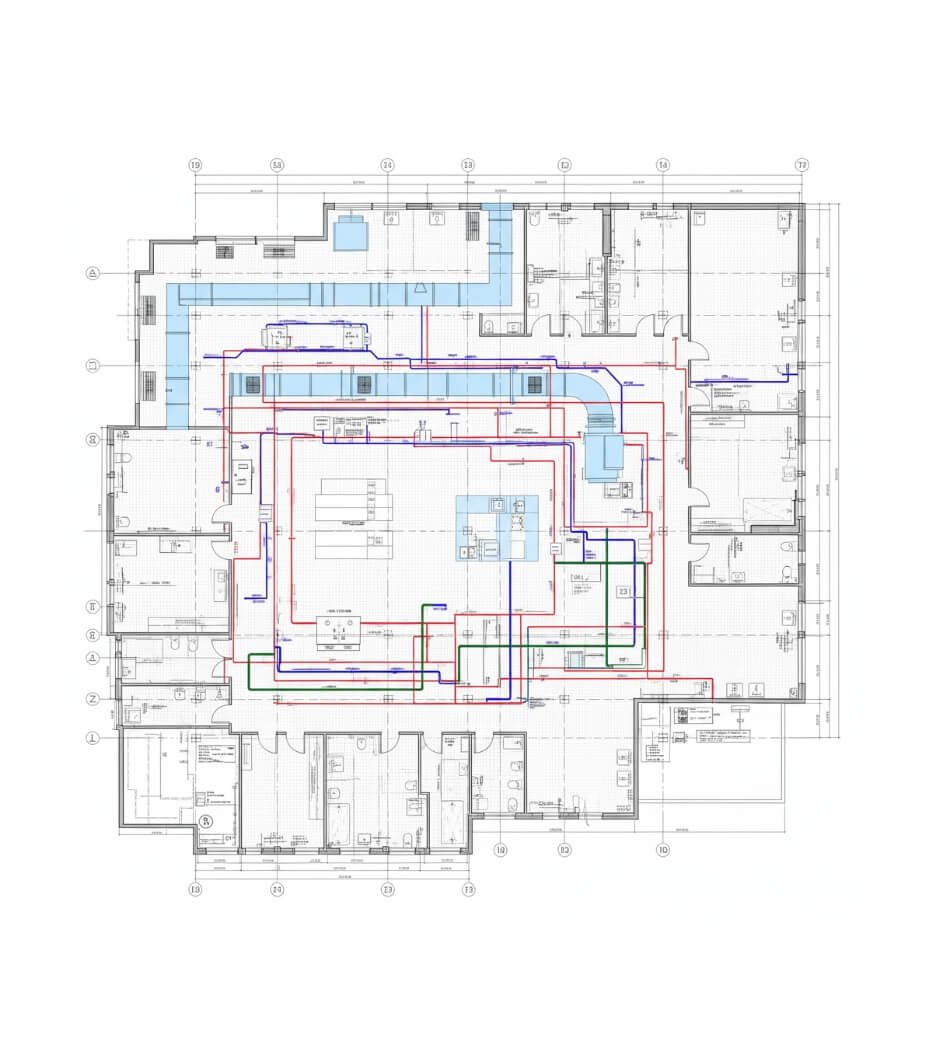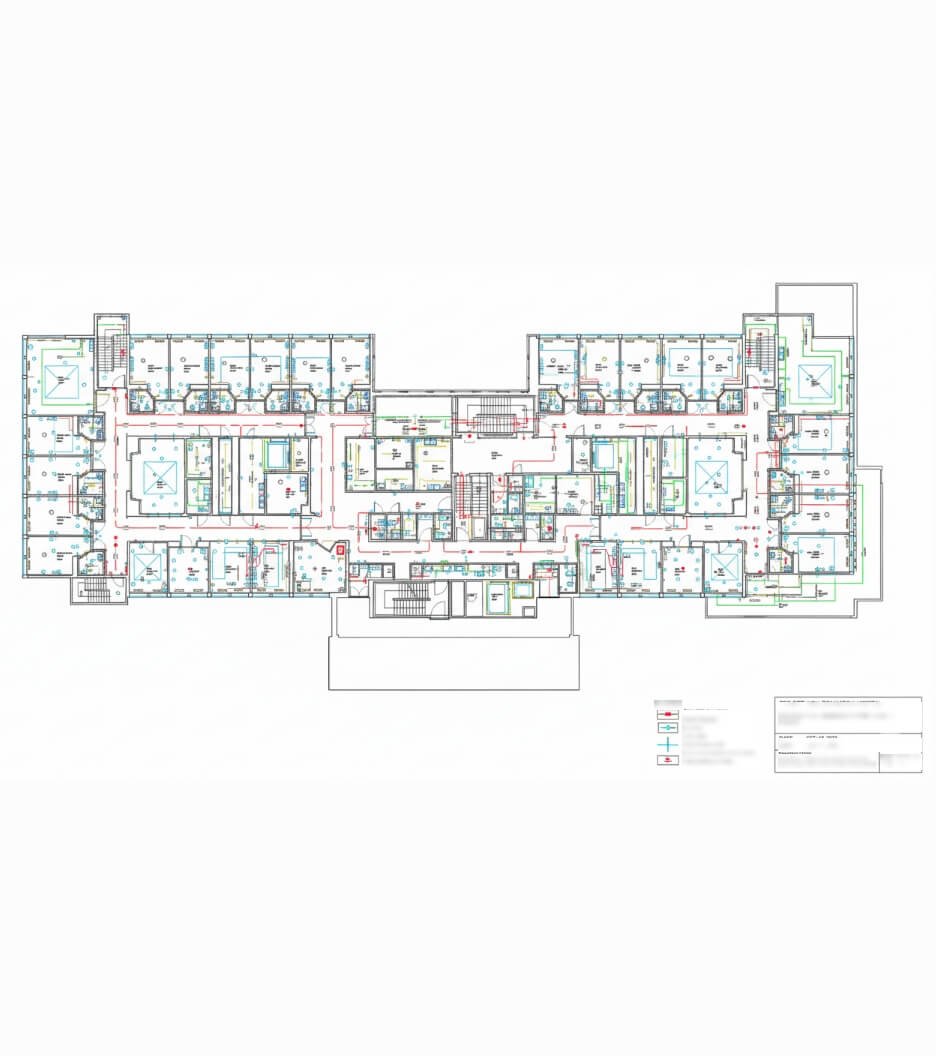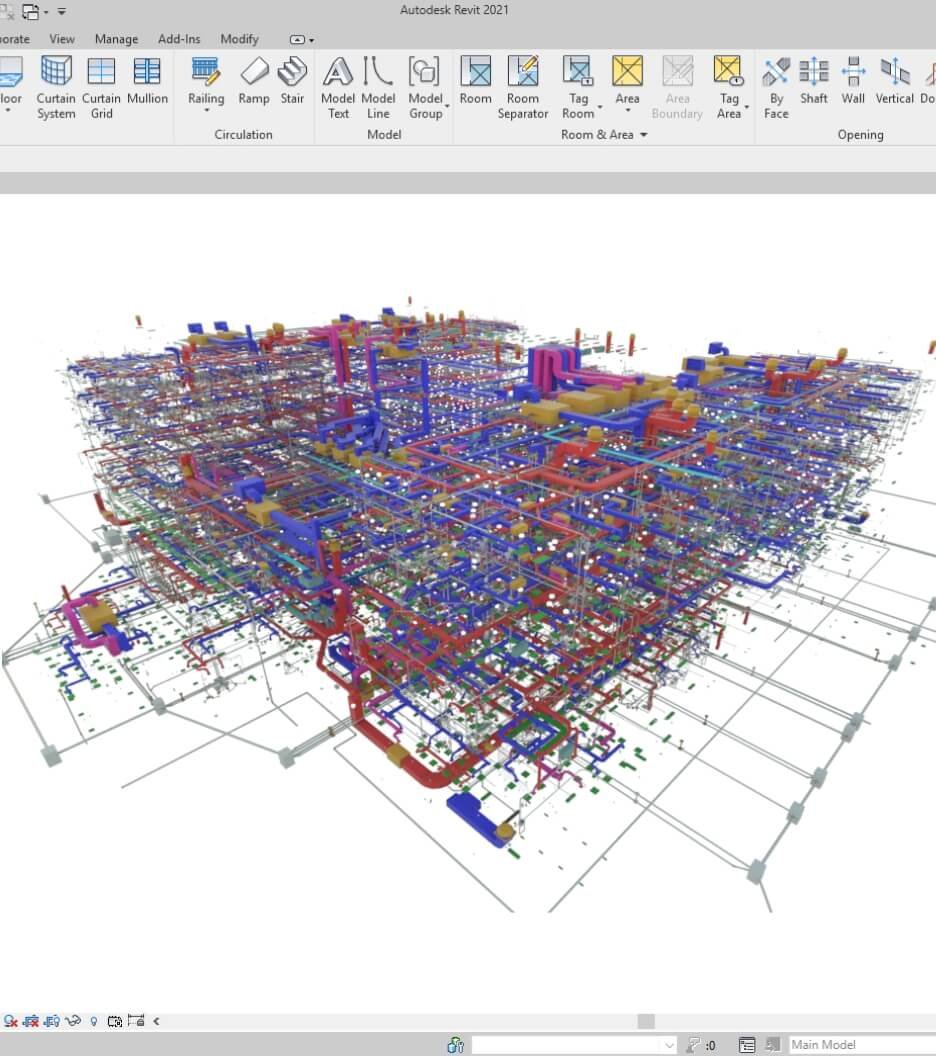 Moin Khan
Moin Khan
What is Clash Detection in BIM and Why It’s Essential for Construction Projects
 Moin Khan
Moin Khan
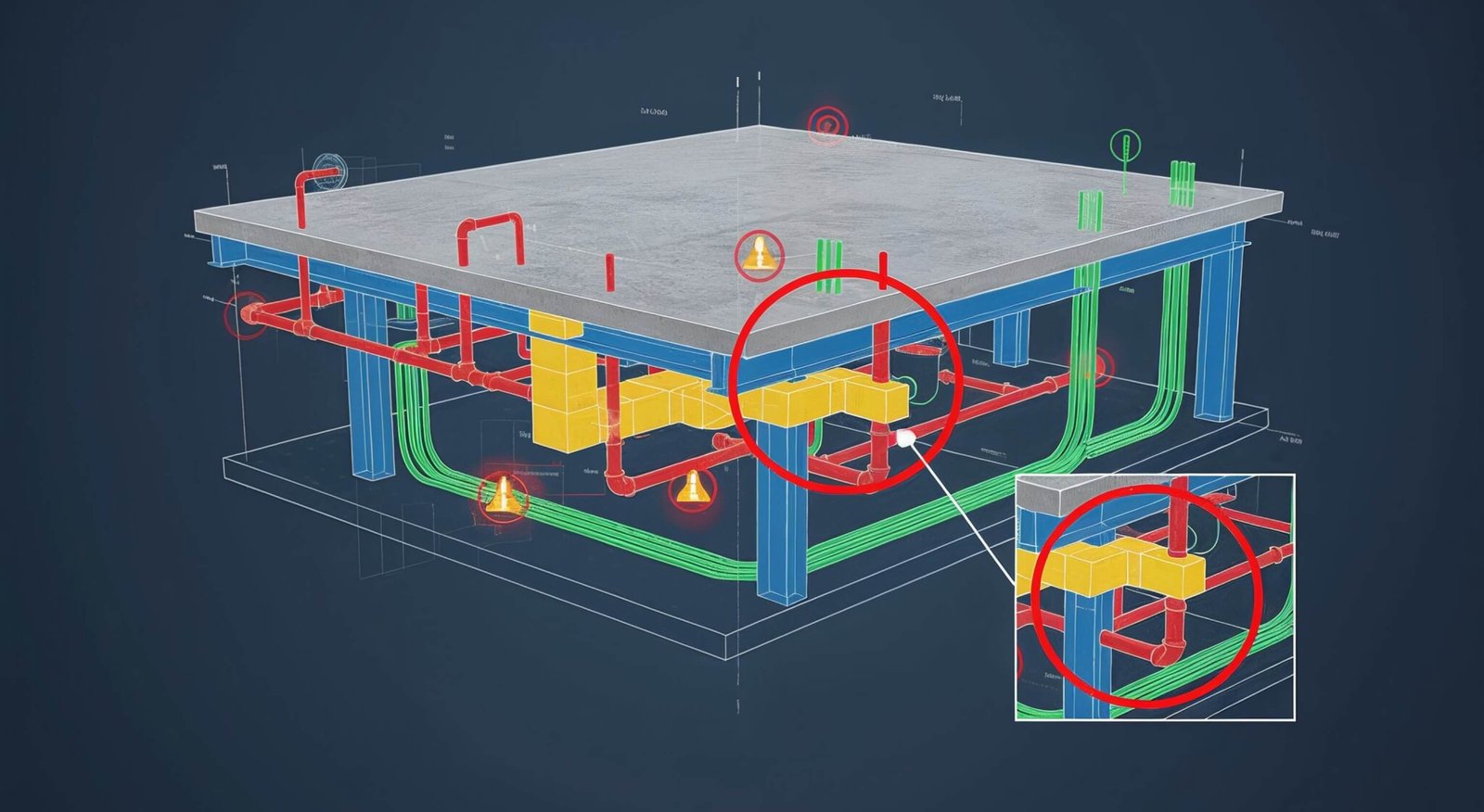
Send Us Your Requirement
Building information modeling has rapidly increased in the architecture and construction industry, and has transformed how AEC professionals work. From streamlining the complex process to enhancing overall building performance, BIM plays a pivotal role. BIM is today a game-changer in the AEC industry, revolutionizing architecture, engineering, and construction.
It’s more than just 3D modeling; it’s a process involving the creation and management of structured, coordinated information about a project. In the evolving state of architecture and construction, even with BIM adoption, a variety of complex stages demand accuracy, efficiency, reliability, and more.
A minor clash, error, or conflict can result in significant losses, misaligned design, an unsafe environment, and low building performance, all of which can impact the overall project. Once the 3D model is curated with rich, intelligent data, the 3D BIM model represents the digital visual of the project, including structural elements, architectural aspects, interior views, and more. However, the integration of a variety of systems, from MEP coordination services to interior visualization, BIM is one of the key solutions.
To ensure that each construction aspect is integrated with precision and faces no challenges, clash detection in construction is crucial, particularly in modern construction practices. Moreover, clashes in the construction approach are a common occurrence that may happen in the early stages of design, causing significant losses in the architectural project. The BIM model is rich in information, and adopting BIM clash detection enables AEC experts to quickly identify potential clashes and implement strategic resolutions.
At its core, building information modeling entails the creation as well as the management of the physical characteristics of infrastructure. Here, clash detection techniques enable experts to get a quick glance at errors that can be costly. Let’s understand the details of clash detection and its critical functions within the BIM workflow.
Enhance Architecture Project with Clash Detection
Get a Quote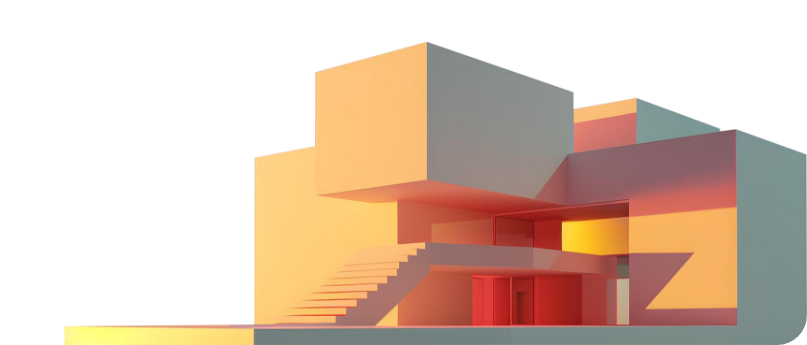
Quick Overview of Clash Detection in Construction
Beginning with any new task, project, or approach, errors are common and expected. These errors or conflicts can result in high costs, low-quality outcomes, an insignificant workflow, an unsafe building environment, overwhelming rework, and the investment of crucial time. Traditionally, errors and conflicts were identified when the on-ground construction began or was completed. The significant rework, added cost of materials and labour, and more result in time-consuming tasks as well as loss to the infrastructure project. With advancements in technology, construction project efficiency and accuracy are increased with the help of a strategic approach to clash detection.
In the simplest terms, clash detection services involve identifying areas where two or more building components overlap in the same physical space within the project’s digital model. Let’s consider, for example, a structural steel beam passing right through a large HVAC duct, or a plumbing pipe intersecting with an electrical conduit—these are referred to as “clashes” in architectural design. Here, MEP coordination services are implemented, along with clash detection, to identify and rectify issues.
These issues or conflicts, left undiscovered until the construction phase, can lead to costly rework, significant delays, and potential safety hazards. This is why clash detection services are essential to implement for early detection, resolution, and prevention of added expenses. As a matter of fact, the collision detection approach is helpful for every stage of the construction, especially in the MEP stage and the structural stage.
Typically, clash detection utilizes specialized BIM software to automatically analyze the 3D model, merge models from different disciplines, such as architecture, structural, and MEP, and identify these interferences. Not only detection of potential errors, but this approach also offers various benefits in the architecture and construction projects, following are;
- Reduced rework
- Optimized material use
- Enhanced project visualization
- Streamlined workflow
- Avoiding delays
- Risk mitigation
These benefits are just a few examples, as the list can be extensive and vary from project to project. However, the concept of clash detection does not end here, as it is categorized into different types for better understanding in the 3D BIM model. In the modern AEC sector, technology is leveraged to its full potential. Let’s understand the types of clashes in BIM modeling.
Understanding Briefly About Types of Clashes
As any architecture project involves different stages, errors are common, and conflict resolution techniques have become a key aspect of success and maintaining project efficiency. As clashes, conflicts, or errors are just an intersection of two construction aspects, but are not always the same. Here are the main types of clashes in construction projects.
- Hard Clashes: This is the most common type, where two objects physically intersect or pass through each other (e.g., a pipe going through a concrete wall).
- Soft Clashes (or Clearance Clashes): These occur when objects do not directly intersect but violate a specified tolerance or clearance zone required for access, maintenance, or insulation e.g., insufficient space is left around a valve for a technician to operate it.
- Workflow Clashes (or 4D Clashes): These relate to scheduling and time. They occur when construction activities or material deliveries overlap in a way that causes a problem on the job sitee.g., the planned installation of scaffolding blocking a critical access point during a separate scheduled activity.
Those mentioned above are the significant types of clash detection in BIM, highlighted in designated colors for easy understanding and clarity. As a matter of fact, each clash type helps architects, designers, contractors, and other experts to eliminate the design changes as well as costly rework, leading to project success. Clash detection services play a major role in BIM services, considering the numerous benefits and complexity of modern architecture projects. Explore in detail about the role of the clash detection workflow in construction.
The Essential Role of Clash Detection in Construction
In the field of architecture and the construction industry, clash detection isn’t just a technical check of different aspects of construction but is considered a proactive quality assurance measure, driving efficiency, precision, reliability, safety, collaboration, and profitability across the entire project lifecycle. Here’s why it’s essential,
Importance of Clash Detection in AEC Projects
Cost savings and rework reduction
Improved coordination
Schedule projects and minimize delays
Better Quality Control and Safety
- Cost savings and rework reduction: The most compelling reason to implement Clash Detection is its direct impact on the bottom line. Finding a design conflict in the digital model costs virtually nothing to fix—a quick model adjustment. Finding that same conflict on the construction site requires stopping work, engaging multiple trades, ordering new materials, and tearing out and reinstalling existing work. Fixing errors during the design phase is exponentially cheaper than fixing them during construction. Clash detection shifts problem-solving from the field to the office.
- Schedule projects and minimize delays: Undiscovered clashes are a primary source of construction delays. When a conflict is found on-site, work stops, Request for Information (RFI) cycles begin, design changes are made, and new materials are ordered. This domino effect can derail the entire project schedule. By resolving hundreds of potential clashes before breaking ground, Clash Detection ensures a smoother, more predictable construction process, helping the project finish on time.
- Improved coordination: BIM models are typically created by separate specialist teams: architects, structural engineers, and MEP (Mechanical, Electrical, and Plumbing) engineers. Clash Detection forces these teams to work closely together. The process involves weekly or bi-weekly “Clash Review Meetings” where all stakeholders review the clash reports together. This fosters a shared understanding of the design intent and ensures all systems work seamlessly within the shared physical space. This enhanced coordination is key to achieving a truly “buildable” design.
- Better Quality Control and Safety: A fully coordinated and clash-free model translates directly to higher construction quality. Trades can install components confidently, knowing their work won’t interfere with others. Furthermore, by identifying spatial issues and clearance violations (soft clashes), the process ensures that critical equipment is accessible for long-term maintenance, leading to safer and more functional buildings post-construction.
These are some of the reasons that highlight the importance of clash detection in BIM. As a collaborative and proactive process, it includes significant steps that ensure the proper implementation and ability to harness the power of identifying and resolving the problem. Here’s a detailed view of the process.
Steps for Accurate Clash Detection
In the architecture and construction industry, clashes are common, as discussed. However, these clashes and errors are resolved through a comprehensive approach that utilizes clash detection techniques. The process is systematic and collaborative, typically following these steps:
Clash Detection Process in Construction Project
Model aggregation
Tolerance setting
Review and prioritization
Clash definition
Automatic clash run
Resolution and model revision
Re-run and validation
- Model aggregation: All discipline models, such as architecture, structure, MEP, fire protection, etc., are imported and merged into a central coordination software, typically Autodesk Navisworks, Solibri, or Bentley Systems.
- Clash definition: The coordination team defines which models should be checked against each other, for example, HVAC vs. Structural Steel, Plumbing vs. Electrical Conduit.
- Tolerance setting: Specific clearance tolerances for soft clashes are defined (e.g., check for a 6-inch gap around all mechanical units).
- Automatic clash run: The software runs the defined checks and generates a detailed Clash Report.
- Review and prioritization: The coordination team reviews the thousands of potential clashes, filtering out “false positives” and prioritizing critical clashes based on severity and location.
- Resolution and model revision: The assigned discipline (e.g., the HVAC team) reviews the specific clash, adjusts their model (e.g., raises or offsets a duct), and re-issues the updated model.
- Re-run and validation: The coordination process is repeated to ensure the fix didn’t introduce a new clash elsewhere.
Insights into Outsourcing Clash Detection Services
By deeply understanding clash detection and its significance in construction, it is a complex process, or, per se, an approach. As the 3D BIM model is data-rich and offers a variety of benefits, implementing conflict detection enables AEC professionals to identify errors at an early stage of design, thereby decreasing potential rework and material wastage, and allowing them to take a proactive approach, among others. This demands technology proficiency, software expertise, experience, well-versed in process, keen attention to detail, and more.
As AEC firms consistently seek ways to reduce added expenses, outsourcing BIM clash detection services is a significant and beneficial solution. The team of professionals has experience in clash detection, understanding the complex design, software proficiency, and more. Partnering with reliable BIM services providers with significant expertise in clash detection can be key to the project’s success at cost-effective pricing plans.
UniquesCADD is a renowned outsourcing BIM company in India, with a team of experts experienced in clash detection and modeling. Offering project accuracy, timely delivery, and consistent support, our professionals ensure efficiency with a cost-effective model.
Final Say
Clash detection services are more than just a software approach or function; they are a project de-risking strategy that enables AEC professionals to quickly identify and resolve conflicts. It represents reactive problem-solving on the construction site, transitioning to proactive coordination in the digital environment, and enhances overall building performance. Any complex construction project seeking to minimize waste, avoid delays, and ensure the highest quality of build, leveraging the power of BIM clash detection is not just an advantage; it has become a necessity.
